
 Kampfgruppe Normandy from Warhammer Historical, borrowed to me by my friend Widgren for this review, is a very thick and very good looking hardback overkill of a ruleset. I’m not completely familiar with the story behind these rules, but they are primarily written for 20mm scale in what comes off as an obvious attempt at doing a set of rules which can’t be used with models you may already have for popular rules using 28mm or 15mm scale. People, well gamers, are very quick to say that “20mm is the
Kampfgruppe Normandy from Warhammer Historical, borrowed to me by my friend Widgren for this review, is a very thick and very good looking hardback overkill of a ruleset. I’m not completely familiar with the story behind these rules, but they are primarily written for 20mm scale in what comes off as an obvious attempt at doing a set of rules which can’t be used with models you may already have for popular rules using 28mm or 15mm scale. People, well gamers, are very quick to say that “20mm is the 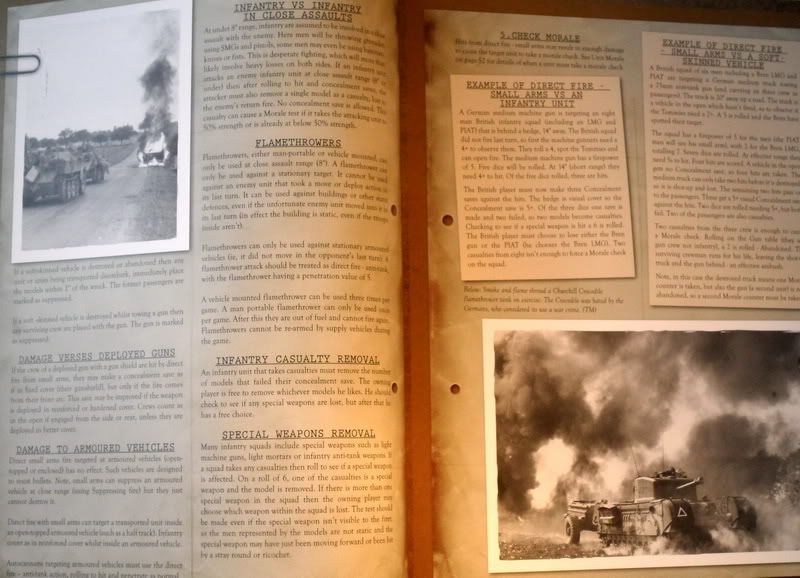 right scale for WW2 due to the amount of miniatures on the market”.
right scale for WW2 due to the amount of miniatures on the market”.Personally I can’t say that I know anyone who plays 20mm scale wargames, I do know a lot of gamers who play 28 and 15mm in my current gaming group and in my past gaming groups – and pretty much the wargaming scene that I have seen with my own eyes in Sweden at conventions. Even though the entry on page 6 says that any scale
 can be used with these rules but they have primarily been written for 20mm 1:1 scale.
can be used with these rules but they have primarily been written for 20mm 1:1 scale.The other design choice that struck me as weird was the complete focus on the 1944 Normandy campaign. While I suppose you could use the rules with other theaters and campaigns of WW2, the emphasis of all historical background information, army lists, intention of use and proposed scenery revolves only around Normandy. This might actually be more off-putting than the 20mm
 scale. If you aren’t really interested in the Western front, late war or the Normandy campaign you won’t really have any incentive to buy this book. On the other hand, if you are a fan of all those categories this book is perhaps all that you would want and will need in order to play games in that setting.
scale. If you aren’t really interested in the Western front, late war or the Normandy campaign you won’t really have any incentive to buy this book. On the other hand, if you are a fan of all those categories this book is perhaps all that you would want and will need in order to play games in that setting.The game uses a point system and you can play it on platoon, company or battalion level – each with a point cap of its own. Army lists are based upon larger formations from which you draw your playing force. Another thing is that there is a fair amount of
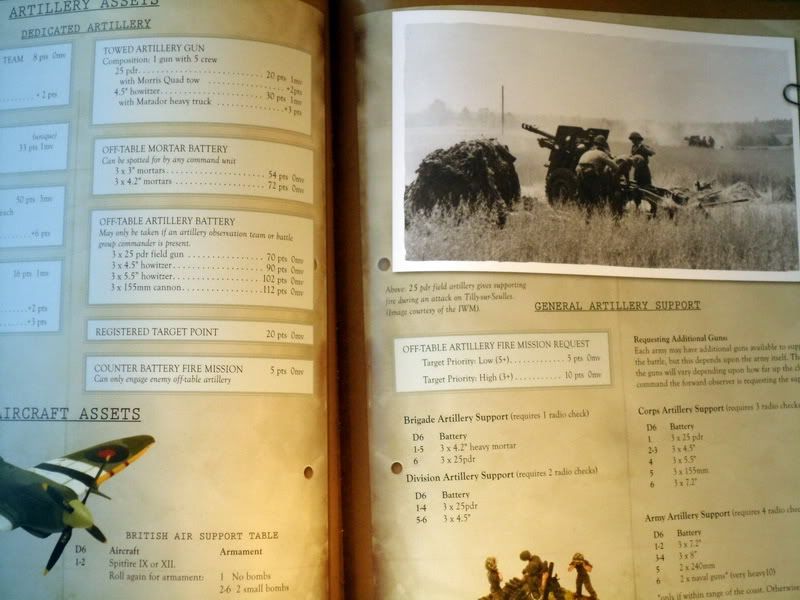 scenarios in the book based upon historical battles during the Normandy campaign, and players are encouraged to base their forces around the scenarios rather than the other way around (like in Flames of War).
scenarios in the book based upon historical battles during the Normandy campaign, and players are encouraged to base their forces around the scenarios rather than the other way around (like in Flames of War).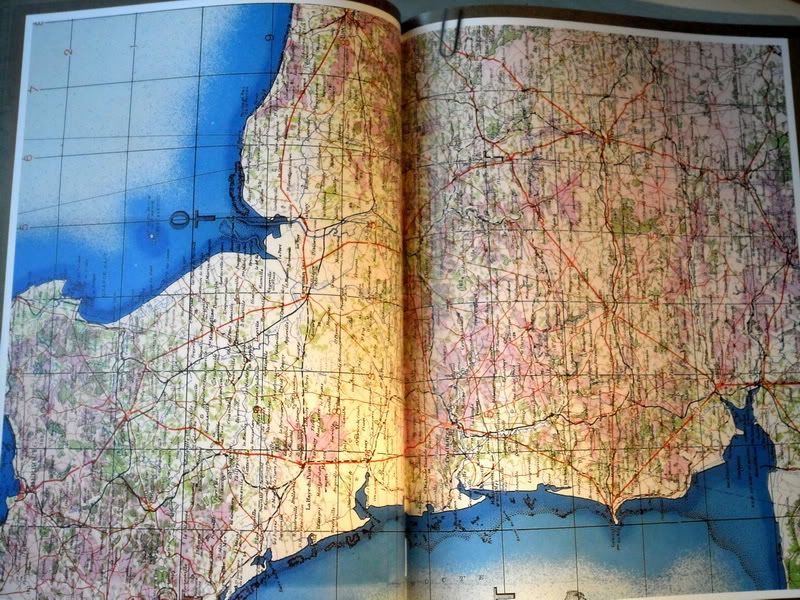 The game uses regular D6 dice to generate results and the basic gameplay have some similarities to Flames of War like the standardized movement rates of various vehicle types and vehicle classifications such as slow tank, motorcycle, half tracked vehicle etc. There are also set modifiers for infantry in various cover and the like that you would expect and have seen in other similar games.
The game uses regular D6 dice to generate results and the basic gameplay have some similarities to Flames of War like the standardized movement rates of various vehicle types and vehicle classifications such as slow tank, motorcycle, half tracked vehicle etc. There are also set modifiers for infantry in various cover and the like that you would expect and have seen in other similar games.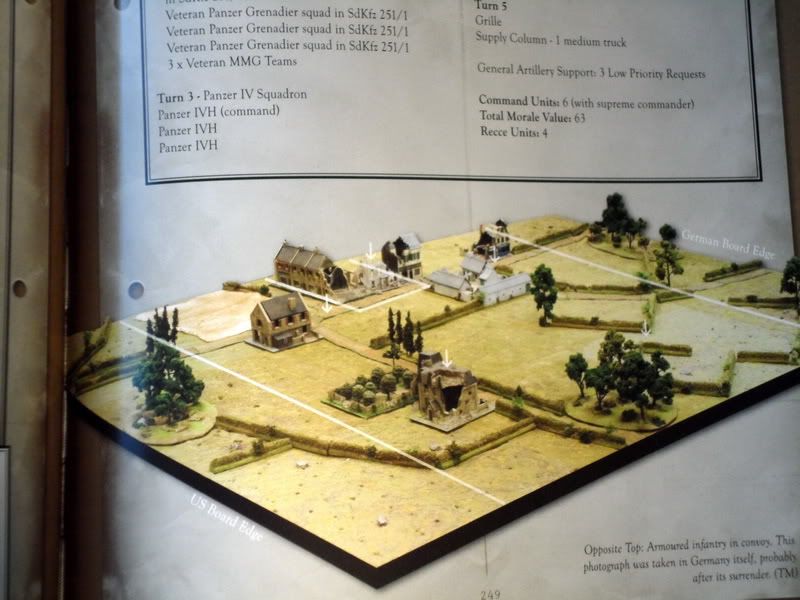 Turns are played just like in most games of this kind – each side completing all their actions before passing the turn over to the opponent. The difference here is that each player rolls D6 dice at the start of his turn to determine the amount of command points he will have at his disposal – which are used to activate units. As such you can end up with fewer command points than you have units in your army and will have to be selective with what you use that turn. The amount of dice used for generating command points increase with the game size, and you also add any command units to that number.
Turns are played just like in most games of this kind – each side completing all their actions before passing the turn over to the opponent. The difference here is that each player rolls D6 dice at the start of his turn to determine the amount of command points he will have at his disposal – which are used to activate units. As such you can end up with fewer command points than you have units in your army and will have to be selective with what you use that turn. The amount of dice used for generating command points increase with the game size, and you also add any command units to that number.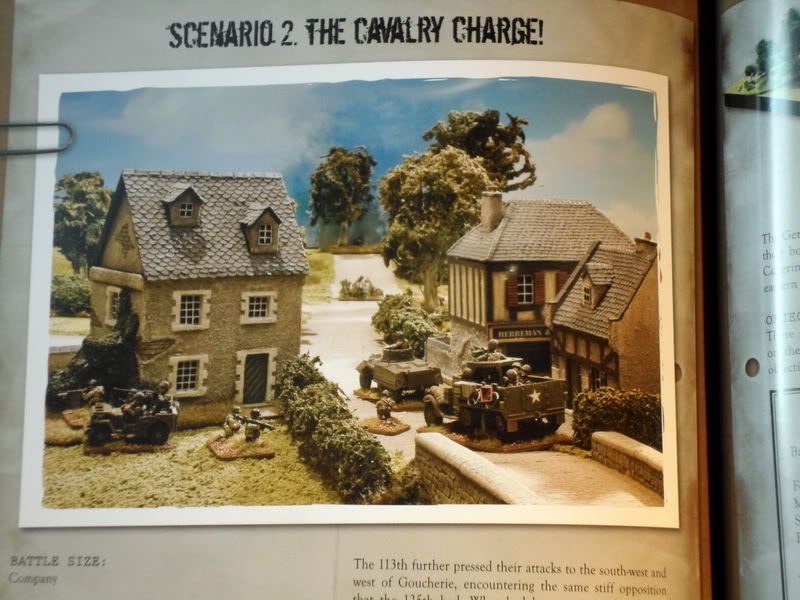 Units are activated one at a time, and each activated unit can perform 2 action. These range from moving around on the battlefield, unlimbering artillery and various firing actions (direct, indirect, suppressing fire etc). There are also a few other actions such as covering fire, resupply and using engineers to perform demolition tasks and such. Firing arcs for infantry is 360 degrees, 90degrees for vehicles and funs, 360 degrees for pintle mounted weapons.
Units are activated one at a time, and each activated unit can perform 2 action. These range from moving around on the battlefield, unlimbering artillery and various firing actions (direct, indirect, suppressing fire etc). There are also a few other actions such as covering fire, resupply and using engineers to perform demolition tasks and such. Firing arcs for infantry is 360 degrees, 90degrees for vehicles and funs, 360 degrees for pintle mounted weapons. 
The weapon ranges in this game are divided into several distances, ranging from “close assault” at 0-8” to “Extreme” at 40-48”. Depending on which weapon class you use, small arms/medium machineguns and so on the maximum range varies but the “to hit” value is static throughout the range chart regardless of what weapons you use.
The game features the usual “Roll to hit” which is answered by a “save” which depends on whether you are in the open or in some kind of cover. Saves range from 6+ at worst to 2+ at best. Unarmored vehicles have hitpoints, the bigger the vehicle the more hitpoints it has. Vehicles also reduce their accuracy depending whether any party moved and/or the target uses cover. I got to say
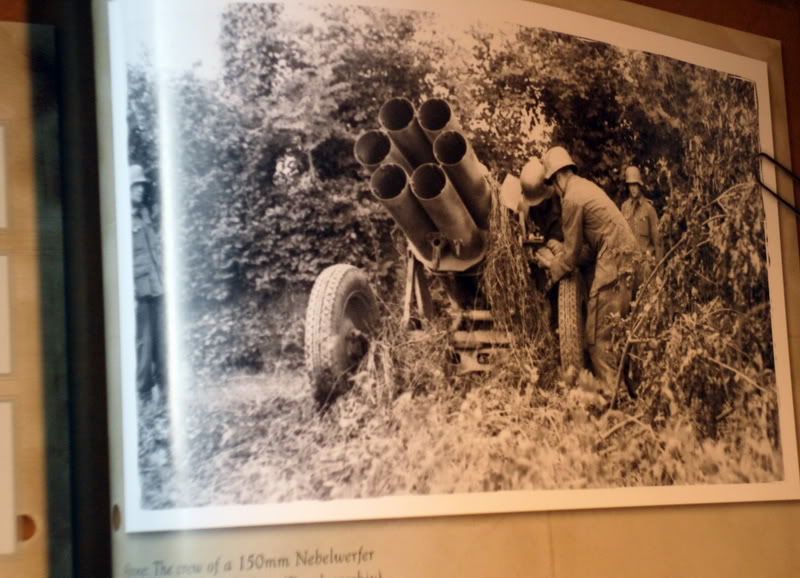 that it is refreshing to see a set of rules that takes into account the movement of BOTH sides as you most often only base accuracy on whether you yourself have moved before taking a shot. A moving target should always be harder to hit.
that it is refreshing to see a set of rules that takes into account the movement of BOTH sides as you most often only base accuracy on whether you yourself have moved before taking a shot. A moving target should always be harder to hit. 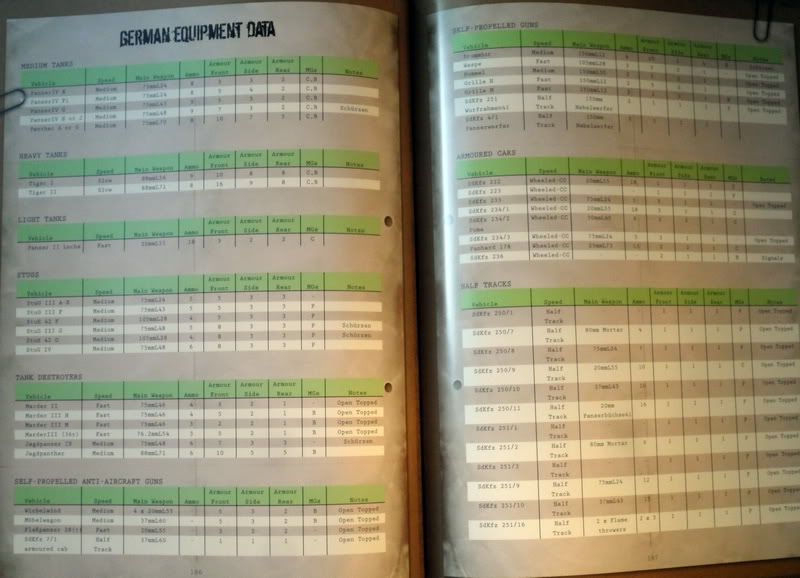 Fighting tanks involves a classic vehicle armor vs gun penetration value chart. The difference form infantry fire is that AT guns roll 2D6 and add the values together then check if they are up to or pass the target armor value. Sadly it doesn’t seem as if the tanks follow the unarmored vehicles with hit points. Instead a hit classed as penetrating automatically destroys the armored vehicle. Rolling double 6’s result in immobilizing the enemy tank which can keep fighting, or double 1’s which are just treated as glancing hits and do nothing. It would have been fun to see a bit more variety in the results of penetrating hits.
Fighting tanks involves a classic vehicle armor vs gun penetration value chart. The difference form infantry fire is that AT guns roll 2D6 and add the values together then check if they are up to or pass the target armor value. Sadly it doesn’t seem as if the tanks follow the unarmored vehicles with hit points. Instead a hit classed as penetrating automatically destroys the armored vehicle. Rolling double 6’s result in immobilizing the enemy tank which can keep fighting, or double 1’s which are just treated as glancing hits and do nothing. It would have been fun to see a bit more variety in the results of penetrating hits.
 Morale is handled on a unit and battlegroup level. On unit level, morale is taken if a unit of infantry has been reduced below 50%, AT guns take morale tests when they lose crew members, softskinned vehicles upon taking hits while tanks largely ignore unit morale. The effects of a failed morale test can result in units abandoning guns and infantry fleeing off table which leads to the battlegroup morale. Battlegroup morale is handled in a interesting way. It’s based upon your entire force as all units have a certain “morale value” ranging between 0-3 which is printed on a small morale token. When you buy units to your battlegroup you automatically receive a morale token for that unit. So once the game starts you will have a pot of morale tokens from which you draw randomly upon losing a unit in battle. What you have drawn is secret to the opponent, but he should be able to see how many morale tokens you have drawn in total at any given time.
Morale is handled on a unit and battlegroup level. On unit level, morale is taken if a unit of infantry has been reduced below 50%, AT guns take morale tests when they lose crew members, softskinned vehicles upon taking hits while tanks largely ignore unit morale. The effects of a failed morale test can result in units abandoning guns and infantry fleeing off table which leads to the battlegroup morale. Battlegroup morale is handled in a interesting way. It’s based upon your entire force as all units have a certain “morale value” ranging between 0-3 which is printed on a small morale token. When you buy units to your battlegroup you automatically receive a morale token for that unit. So once the game starts you will have a pot of morale tokens from which you draw randomly upon losing a unit in battle. What you have drawn is secret to the opponent, but he should be able to see how many morale tokens you have drawn in total at any given time.Morale tokens are accumulated if units are destroyed, withdraw in disorderly fashion, HQ units are destroyed, being subjected to air attacks, having enemy capturing objectives and losing objectives. Morale tokens are also drawn when you want to remove suppressed tokens from your units. Each morale token allows you to remove 1D6 suppressed markers on the table.
Your battlegroup morale is broken is all the morale tokens that you have drawn is equal to or greater than your calculated battlegroup morale (which is once again based upon units in your force). I think this is the most interesting aspect of the Kampfgruppe Normandy rules and perhaps the only thing that really stands out to me.
The rules section is not very long, 52 pages all in all. The remainder of this 347page thick book is dedicated to army lists, scenarios, a mini campaign and equipment tables (British, American and German only). The scenarios seem well researched as do the army lists. You get stuff like lists of what battalions included in terms of equipment, on company level and in what amounts. Units in the arsenal of each army are described well enough to give newcomers some insight into their use and historical context.
The question is, are the rules worth it? The books is crazy expensive, my friend Widgren just bought it because of the Warhammer Historical sale a few months back. It’s not something you buy spontaneously. The rules aren’t bad but apart from the battlegroup morale I don’t find them to offer anything special or new which would warrant a swap of rulesets for players already involved in WW2 gaming. If you are just starting out with WW2 gaming the rules would be good if they were not part of this huge volume that is Kampfgruppe Normandy. My only complaint with the book itself would be the dark colored background and an intimidating amount of text on each page which could easily cause an anxiety attack upon a first casual glance.
I could compare these rules with others rules that I have read and am familiar with. Kampfgruppe Normandy is a lot less complex rulewise than Flames of War (which on the other hand is bogged down with a lot of whacky rules) to mention a game played on roughly the same level. The text in KGN in the rules section is a lot more streamlined and I would say a lot more user friendly with the heavy emphasis on categorization of weapons and vehicle types.
If you are looking for a more platoon based experience with more interesting details then there are rulesets that offer a relatively fast but fun gameplay like Victory Decision. Slightly more detailed are the “Berlin or Bust: Bellum Europa” which are modified WW2 rules based upon the Secrets of the Third Reich rules and offer you generic late war gameplay and army rosters for US/Soviet/UK and German armies (and these are available for free at the West Wind forum http://westwindproductions.co.uk/forums/index.php?topic=2525.0 ).
I think all of those other rulesets have a more distinct personality and things that set them apart from this rather generic set of rules that have been packaged into a Normandy campaign deal that is Kampfgruppe Normandy. And if I wanted to get someone into playing WW2 games this heavily themed book would perhaps not be my first recommendation.
No comments:
Post a Comment